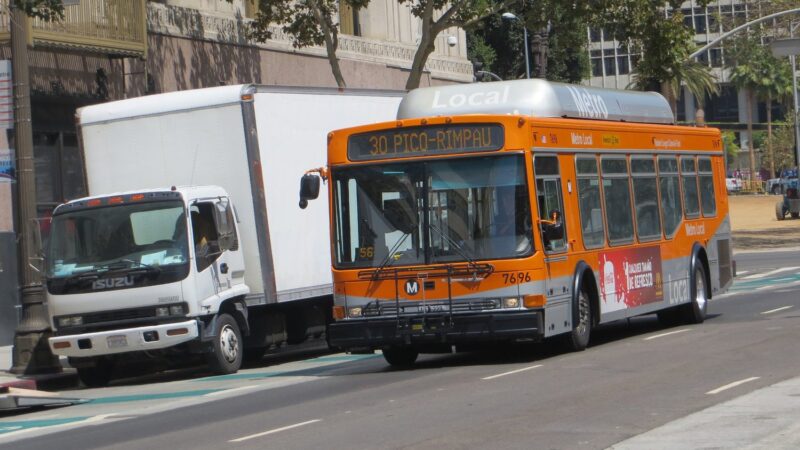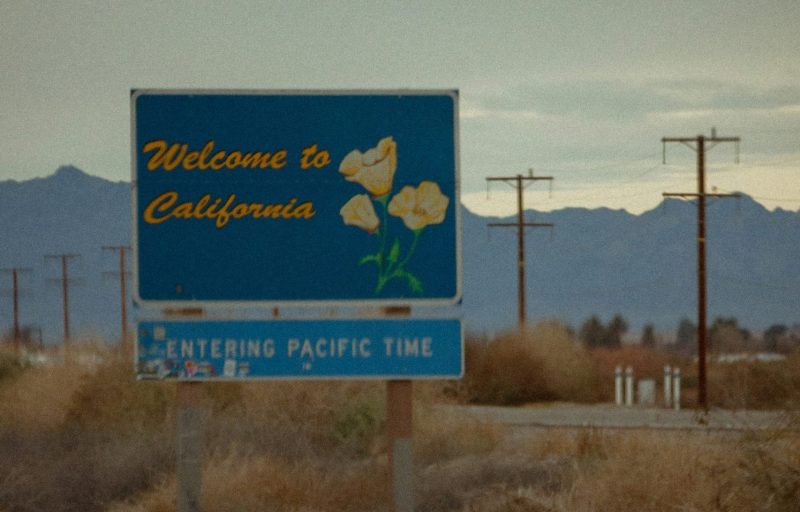Los Angeles is often held up as the case study for car-centric development run amok, with sprawling detached-dwelling neighborhoods bisected by traffic-strewn freeways. But in recent years, the city has been pursuing a completely different path: public transit champion.
This article was written by Ben Abramson and originally published by Strong Towns.
The local transit agency, Metro, and the city of Los Angeles have committed to add 100 miles of priority bus lanes before the area hosts the 2028 Summer Olympics. The campaign has hit high gear in 2023, with 30 miles of existing lanes converted to only allow bus traffic during peak travel times.
As a result, transit times are down as much as 30% on busy corridors, with dedicated lanes such as La Brea Avenue and Venice Boulevard (watch a bus glide through gridlock in this X, formerly known as Twitter, video). As a bonus, many of these reconfigurations have also incorporated bike lanes and reconfigured intersections for pedestrian safety.
The city is also celebrating a milestone in its light rail and subway system. In June 2023, it opened the Regional Connector, a tunnel project that provides easier access to regional rail service and includes three new downtown stops.
In an editorial, the Los Angeles Times praises the progress: “The best advertisement for public transportation is seeing a bus whoosh past lines of cars stuck in traffic. When transit is convenient, comfortable, affordable and faster than driving, the service practically sells itself. That’s why a recent bus-lane boom in Los Angeles is so welcome.”
“The best advertisement for public transportation is seeing a bus whoosh past lines of cars stuck in traffic.”
The Times editorial also notes that, in some cases, approval for new bus lanes has happened in less than a year, which it calls “warp speed for transportation infrastructure.”
Easing the path to implementation is the fact that many of the new lanes are designated bus only during the busiest rush-hour transit times, and can be used by private vehicles or as parking lanes the rest of the time. This substantially reduces costs and helps minimize resistance, or “bus-lane NIMBYism,” as the Times calls it.
All these changes did not come easily. Writing for MoveLA, a local transit advocacy organization, Eli Lipmen details how supporters and allies faced years of resistance and bureaucratic challenges before getting broad level buy-in to enhance transit service in Los Angeles. “This monumental progress on bus lanes in LA has been years in the making and can be traced to a coordinated advocacy effort that aggressively pushed for both funding and policies that led to better service, infrastructure that speeds up buses and makes routes more reliable, and amenities that benefited current riders.”
A big part of those efforts were ballot initiatives in 2008 and 2016 in which voters agreed to half-cent increases in the city sales tax to benefit public transit. According to MoveLA, those two changes account for an additional $2.4 billion in transit funding in 2023.
All is not perfect in this transition. Bus lanes near retail are often blocked by drivers parking or standing illegally, increasing travel times. But because the transit agency lacks the authority to ticket offenders, it is deploying automated plate readers that will refer violators to the city to issue citations. Many advocates also hope the success of dedicating the lanes to buses during rush hour will ultimately lead to making those closures permanent.
Looking ahead, the city and Metro have committed to a NextGen bus policy, which seeks several improvements in transit service and infrastructure. Among many rider-friendly goals, they’re promising to provide 80% of riders with buses every 10 minutes, and for 99% of riders to have a quarter mile or less walk to a bus stop. Predictability of service is one of the most important factors for converting drivers to transit riders.
If you’re in a similar battle in your community, Lipmen has words of encouragement: “For other advocates hoping to push their cities and agencies to dramatically increase bus lane production, we hope our story can offer lessons and spark ideas.”






